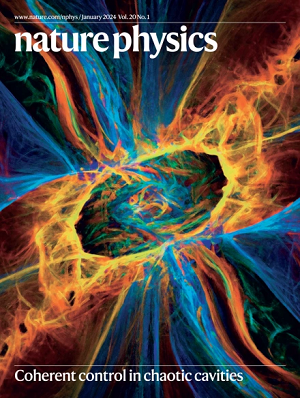Entanglement and the density matrix renormalization group in the generalized Landau paradigm
IF 18.4
1区 物理与天体物理
Q1 PHYSICS, MULTIDISCIPLINARY
引用次数: 0
Abstract
The fields of entanglement theory and tensor networks have recently emerged as central tools for characterizing quantum phases of matter. Here we determine the entanglement structure of ground states of gapped symmetric quantum lattice models and use this to obtain the most efficient tensor network representation of those ground states. We do this by showing that degeneracies in the entanglement spectrum arise through a duality transformation of the original model to the unique dual model where the entire dual symmetry is spontaneously broken. Physically, this duality transformation amounts to a—potentially twisted—gauging of the unbroken symmetry in the original ground state. In general, the dual symmetries of the resulting models are generalized non-invertible symmetries that cannot be described by groups. This result has strong implications for the complexity of simulating many-body systems using variational tensor network methods. For every phase in the phase diagram, the dual representation of the ground state that completely breaks the symmetry minimizes both the entanglement entropy and the required number of variational parameters. We demonstrate the applicability of this idea by developing a generalized density matrix renormalization group algorithm that works on constrained Hilbert spaces and quantify the computational gains obtained over traditional tensor network methods in a perturbed Heisenberg model. Our work testifies to the usefulness of generalized non-invertible symmetries and their formal category theoretic description for the practical simulation of strongly correlated systems. Quantum spin chains can be represented in several ways, and eigenstates in these dual models have different entanglement structures. By characterizing the dual theories, the optimal tensor network algorithm for simulating the models has been found.


广义朗道范式中的纠缠与密度矩阵重整化群
纠缠理论和张量网络领域最近成为表征物质量子相的核心工具。在这里,我们确定了间隙对称量子晶格模型基态的纠缠结构,并利用它来获得这些基态的最有效的张量网络表示。我们通过证明纠缠谱中的简并是通过原始模型到唯一对偶模型的对偶变换而产生的,在这种对偶模型中,整个对偶对称性自发地被打破。从物理上讲,这种对偶变换相当于对原始基态中未破缺对称性的潜在扭曲测量。一般来说,所得模型的对偶对称性是不能用群来描述的广义不可逆对称性。这一结果对使用变分张量网络方法模拟多体系统的复杂性具有重要意义。对于相图中的每个相,基态的对偶表示完全打破了对称性,使纠缠熵和所需的变分参数数量最小化。我们通过开发一种适用于受限希尔伯特空间的广义密度矩阵重整化群算法来证明这一思想的适用性,并量化了在扰动海森堡模型中通过传统张量网络方法获得的计算收益。我们的工作证明了广义不可逆对称性及其形式范畴论描述对强相关系统实际模拟的有用性。
本文章由计算机程序翻译,如有差异,请以英文原文为准。
求助全文
约1分钟内获得全文
求助全文
来源期刊

Nature Physics
物理-物理:综合
CiteScore
30.40
自引率
2.00%
发文量
349
审稿时长
4-8 weeks
期刊介绍:
Nature Physics is dedicated to publishing top-tier original research in physics with a fair and rigorous review process. It provides high visibility and access to a broad readership, maintaining high standards in copy editing and production, ensuring rapid publication, and maintaining independence from academic societies and other vested interests.
The journal presents two main research paper formats: Letters and Articles. Alongside primary research, Nature Physics serves as a central source for valuable information within the physics community through Review Articles, News & Views, Research Highlights covering crucial developments across the physics literature, Commentaries, Book Reviews, and Correspondence.
 求助内容:
求助内容: 应助结果提醒方式:
应助结果提醒方式:


